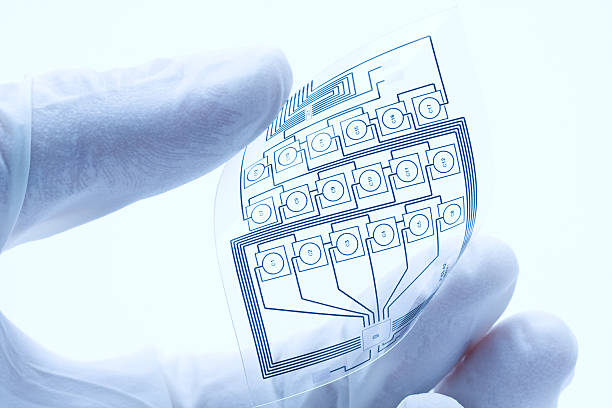Advancements in Battery Technology for Electric Vehicles
The landscape of electric vehicle (EV) technology is undergoing rapid transformation, with battery innovation at its core. These advancements are crucial for overcoming common challenges associated with range anxiety, charging times, and overall vehicle cost. As the automotive industry shifts towards sustainable mobility, the ongoing evolution of battery chemistry, design, and manufacturing processes promises to unlock new possibilities for electric transportation, making EVs more accessible and appealing to a global audience.

Evolving Battery Chemistry for Electric Vehicles
The fundamental science behind electric vehicle batteries is continuously refined, focusing on improved energy density, power output, and lifespan. Lithium-ion batteries, currently the dominant technology, are seeing advancements through new cathode materials like nickel-manganese-cobalt (NMC) and nickel-cobalt-aluminum (NCA) chemistries, which offer higher energy storage per unit mass. Research into lithium iron phosphate (LFP) batteries also continues, particularly for their enhanced safety and longer cycle life, making them a viable option for certain segments of the electric fleet. These chemical evolutions are key to pushing the boundaries of what electric vehicles can achieve in terms of range and overall performance.
Enhancing Energy Density and Charging Speed
Increasing energy density allows EVs to travel longer distances on a single charge, a critical factor for consumer adoption and the overall efficiency of electric transportation. Alongside this, efforts to accelerate charging speeds are equally important. Innovations such as silicon-anode batteries are being explored, which can store significantly more lithium ions than traditional graphite anodes, potentially boosting energy density by a substantial margin. Furthermore, advancements in battery thermal management systems and power electronics are enabling faster charging rates without compromising battery longevity or safety, directly impacting the convenience and practicality of electric vehicle ownership and usage.
Innovations in Battery Safety and Longevity
Battery safety remains a paramount concern in electric vehicle engineering and design. Significant progress is being made in preventing thermal runaway through improved cell designs, advanced battery management systems (BMS), and enhanced cooling mechanisms. These systems meticulously monitor battery temperature, voltage, and current to ensure optimal operation and prevent overheating. Concurrently, research into increasing battery longevity is vital for reducing the environmental impact and total cost of ownership of EVs. Techniques like optimized charging algorithms and cell balancing contribute to extending the useful life of battery packs, ensuring they perform reliably over many years of driving.
The Role of Lightweighting and Sustainability
Lightweighting is a crucial aspect of modern automotive design, directly influencing the efficiency and range of electric vehicles. Reducing the overall weight of the battery pack and the vehicle structure means less energy is required to move the vehicle, thereby extending its range. This involves using advanced materials like aluminum alloys and composites in battery enclosures and vehicle chassis. Moreover, sustainability in battery production is gaining prominence, focusing on responsible sourcing of raw materials, reducing manufacturing emissions, and improving recycling processes. Developing a circular economy for EV batteries is essential for minimizing environmental footprint and supporting long-term ecological balance.
Future Directions in Electric Vehicle Mobility
The future of electric vehicle mobility is closely tied to breakthrough battery technologies. Solid-state batteries, for example, are a next-generation technology poised to offer even higher energy densities, faster charging, and improved safety compared to current lithium-ion batteries. These batteries replace the liquid electrolyte with a solid material, potentially simplifying battery design and enhancing stability. Research and development also continue into alternative battery chemistries, such as sodium-ion and lithium-sulfur batteries, which could offer lower costs and improved performance characteristics. These ongoing innovations are set to further integrate electric vehicles into urban and long-distance transportation networks, enhancing connectivity and overall user experience.
Leading the charge in these advancements are numerous companies and research institutions globally. For instance, QuantumScape and Solid Power are prominent players in solid-state battery development, aiming to deliver higher energy density and improved safety. Companies like StoreDot are focusing on extreme fast charging capabilities, significantly reducing charging times. Traditional battery manufacturers such as LG Energy Solution, Panasonic, and CATL continue to refine lithium-ion technology, exploring new cathode and anode materials, including silicon-anode batteries for increased energy capacity. These efforts contribute to the broader goals of enhanced electric vehicle performance and market adoption.
The continuous advancements in battery technology are instrumental in shaping the future of electric vehicles. From enhancing energy density and charging speeds to bolstering safety and sustainability, each innovation brings EVs closer to becoming the predominant mode of transportation. These developments not only improve the performance and appeal of electric vehicles but also play a significant role in achieving global sustainability goals and transforming urban mobility paradigms.






